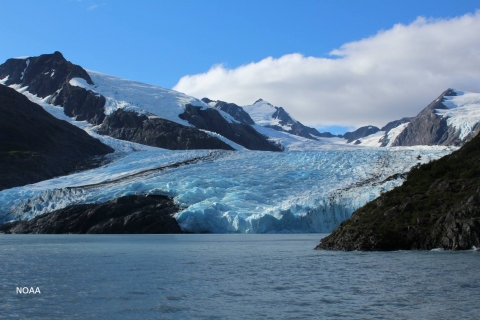Sep172015
Posted at 4:20 PM
In America’s path forward, the Department of Commerce is working to help communities and businesses prepare for and prosper in a changing environment. Through the National Oceanic and Atmospheric Administration (NOAA), the Department is working to both advance the understanding and prediction of changes in the environment, and to strengthen the resiliency of communities and regions. Recently, NOAA has worked to shine a spotlight on climate change in the Arctic.
The Arctic is currently warming at twice the rate of anywhere else on earth. From thinning sea ice and glacier melt to shifting seasonal patterns, the consequent impacts of climate change in the Arctic have already affected natural ecosystems, local communities, and indigenous peoples of the Arctic region.
Dr. Kathryn Sullivan, the Under Secretary of Commerce for Oceans and Atmosphere and NOAA Administrator, recently traveled to Alaska with President Obama, Secretary of State John Kerry, and other international leaders in order to generate momentum and expedite progress in addressing some of the most pressing issues facing the Arctic region, including climate change. While in Alaska, Dr. Sullivan participated in the Conference on Global Leadership in the Arctic: Cooperation, Innovation, Engagement and Resilience (GLACIER). This conference brought together Foreign Ministers of Arctic nations and key non-Arctic states with scientists, policymakers, local community members, and stakeholders to share opportunities to prepare for and respond to the conditions of a changing Arctic. At the conference, Dr. Sullivan facilitated the dialogue, “Strengthening Observations Networks”, which featured several panelists to address the climate change in the Arctic and how organizations can improve through connections among one another.
As changes in the Arctic continue to impact the global environment, the demand for reliable, objective information and forecasts continues to steadily increase. While in Alaska, the President announced several investments to help produce the environmental intelligence needed while studying the changes in the Arctic. These investments build on the President’s Climate Action Plan, which sets forward a series of executive actions to reduce carbon pollution, prepare the United States for the impacts of climate change, and to lead international efforts to address global climate change.




